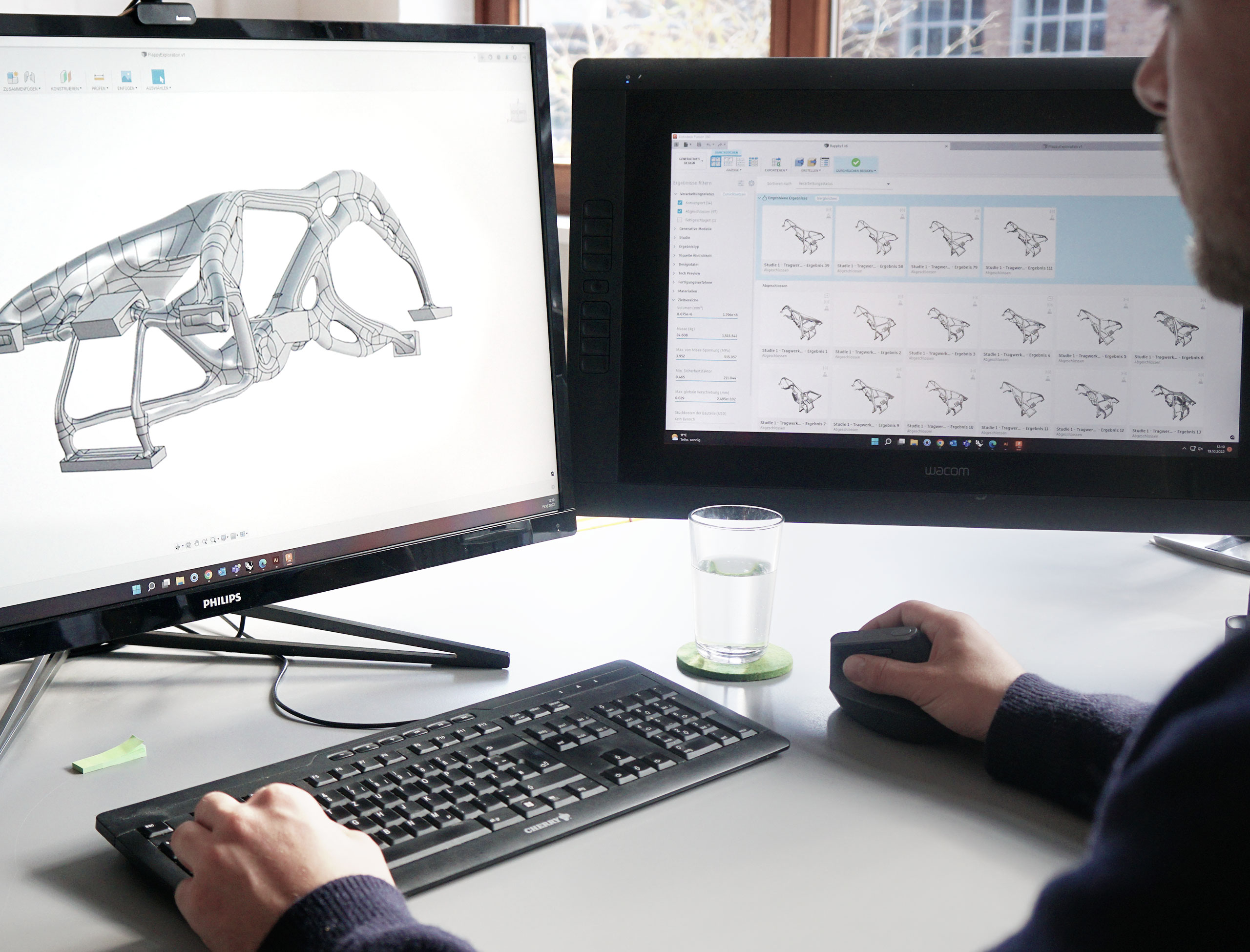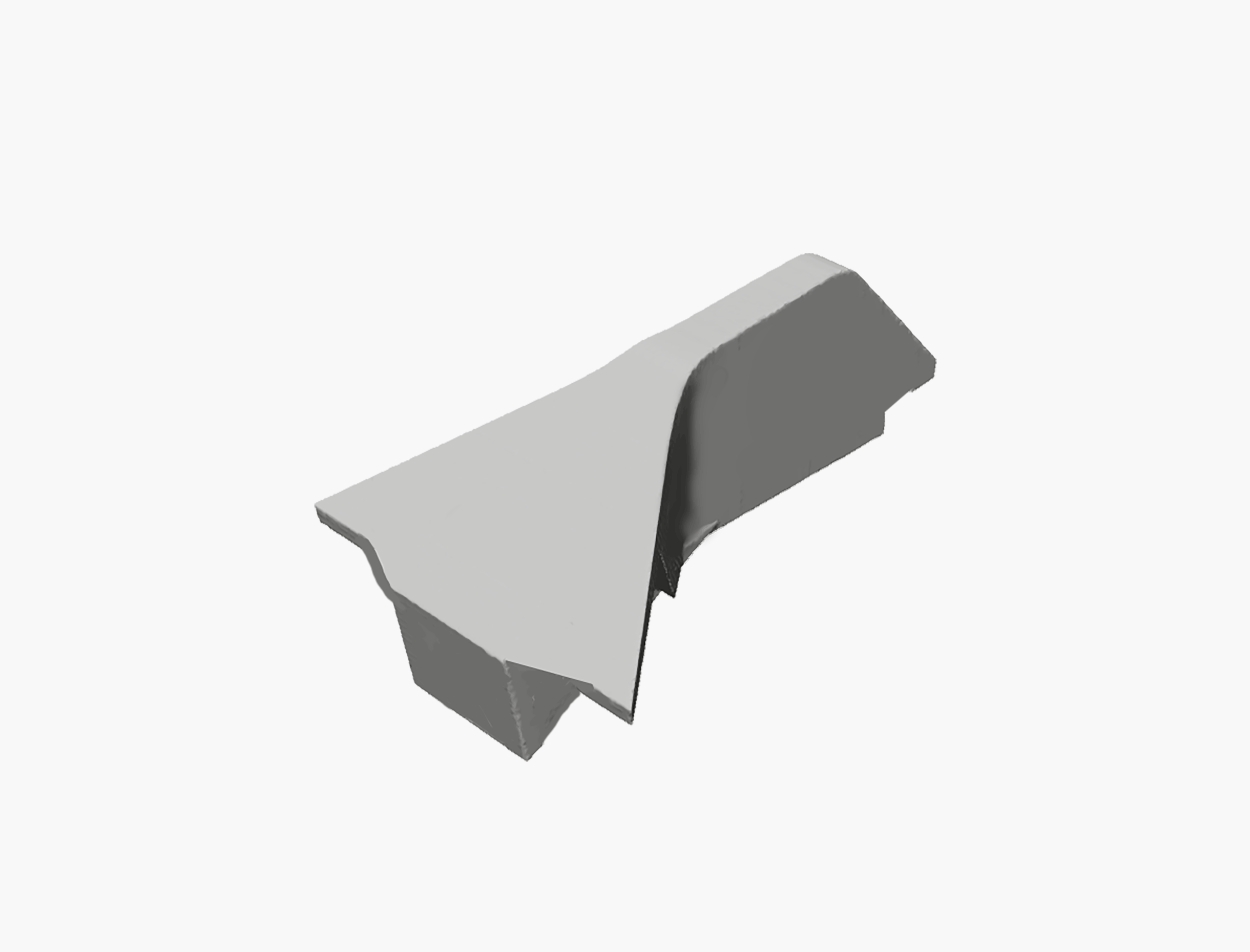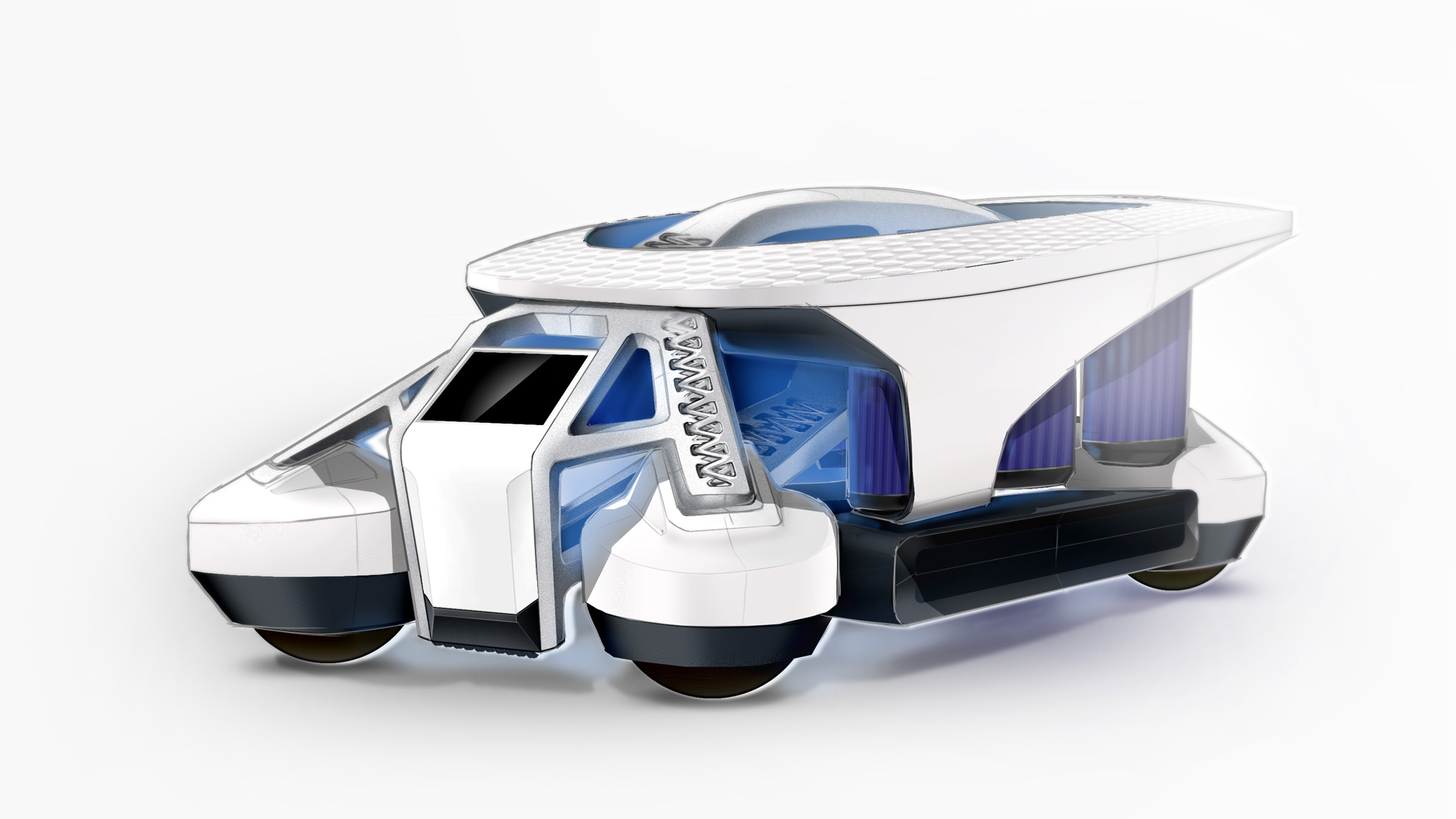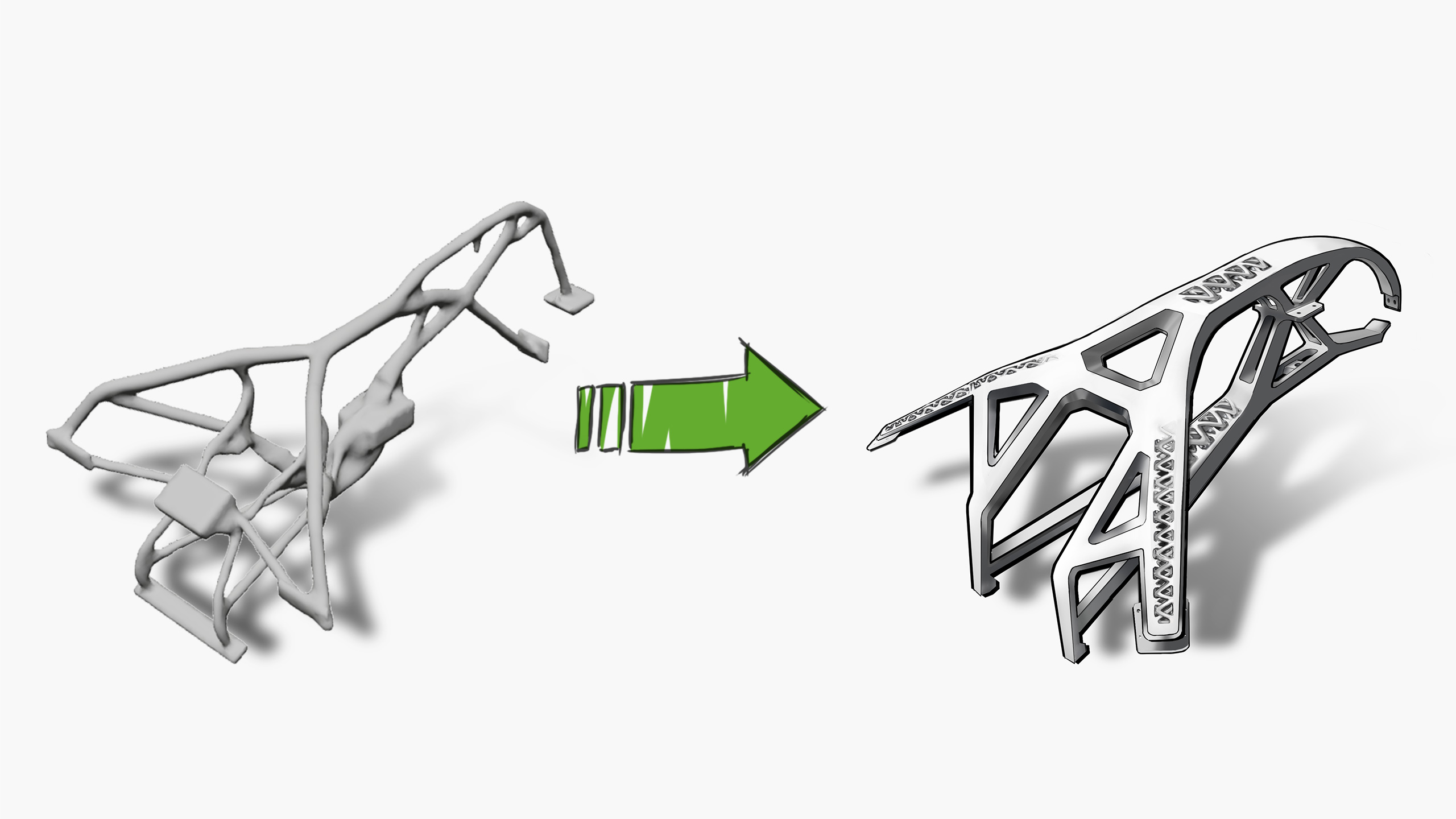Vision Panel
FLaPPyBot goes DfAM
How do new design and manufacturing possibilities affect the design of industrial products?
The processes of additive manufacturing and generative design offer us designers and engineers many new possibilities. We explored how these affect the development and design of industrial products based on an existing product. The DLR’s “FLaPPyBot” served as a reference for our DfAM redesign (DfAM = Design for Additive Manufacturing).
Starting with the basic structure, we had the software calculate the ideal shape of the frame. To do this, we defined the interfaces to the wheels and other components and specified the forces acting on the frame. The result was an organic structure optimised for lightweight construction and rigidity. This approach results in a completely new frame setup, which is designed as a mono-part for additive manufacturing. Next came the detailing of the functional and design aspects, such as the integration of cable guides, connection points for components or cooling and ventilation ducts.
By adding lightweight structures, so-called “lattice structures”, further weight is saved and the formal aesthetics of the component are deliberately shaped. The result is only one part instead of many individual parts. In addition to the weight and material savings, labour-intensive processing steps are eliminated in production.
As designers, we do not leave the design to the software alone. To this end, we have adapted the design language of the frame and worked it out as a coherent overall picture without losing the constructive advantages of the calculations. Computer-generated structures are also used for the add-on parts, which not only fit into the overall design, but also increase the rigidity of the components and lead to material savings.



